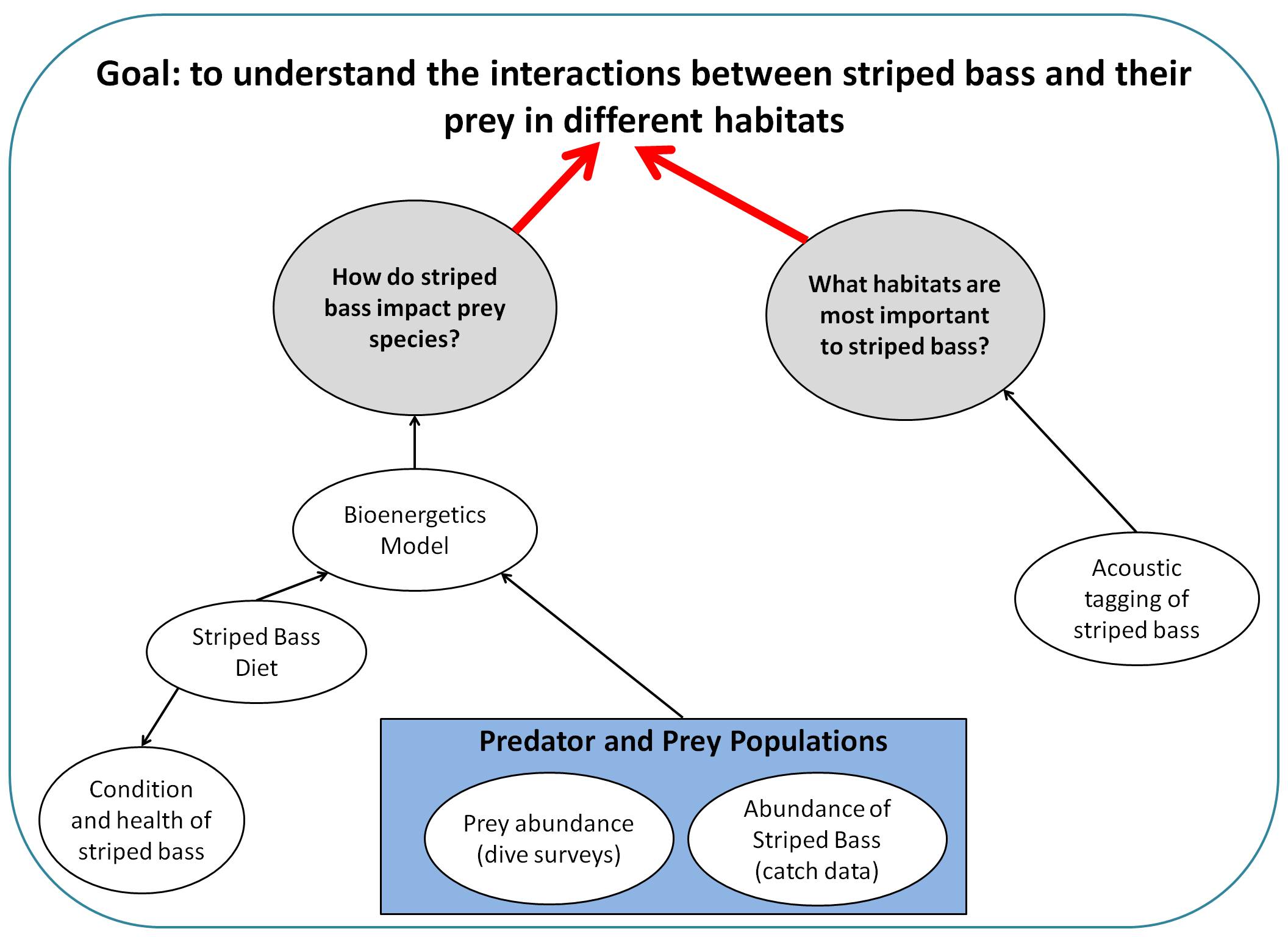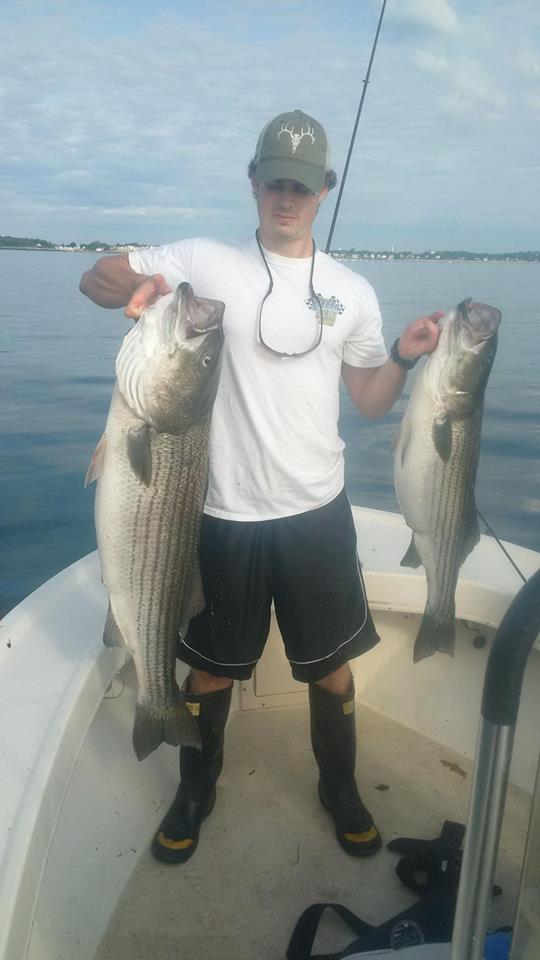About This Project
The striped bass fishery is a vital component of New England's coastal economy. Unfortunately, anglers and scientists agree that striped bass populations are declining. We must understand the ecological causes and consequences of this decline in order to develop sustainable management strategies. This study will assess how striped bass interact with important prey species, like lobster, in order to inform policy.
Ask the Scientists
Join The DiscussionWhat is the context of this research?
- Striped Bass (Morone saxatilis) are large, marine predators that migrate from the southern United States up through New England. During their migration they consume a variety of bait-fish and crustaceans. Past research has provided valuable insight into striped bass prey consumption. However, we need estimates of prey abundance within different habitats (eg. sandy beaches, cobble/rock, eel-grass beds) to quantify the impact of striped bass on prey communities.
- In the south, striped bass typically feed on fish prey, but many individuals feed predominantly on crustaceans (crabs and lobsters) when they migrate through New England. We want to know what this means for striped bass and for the prey communities which they feed on.
What is the significance of this project?
Fisheries management has historically implemented strategies without accounting for the complex interactions between species. More recently, scientists have pushed for ecosystem-based management, where policies consider many ecological variables. This study uses this concept to ask vital questions related to striped bass and will provide valuable insight on the interactions between striped bass and their most important prey items, specifically the American lobster.
What are the goals of the project?
- What are the health consequences of striped bass diet? By collecting fish from Massachusetts, we will determine the condition and health effects of a crustacean-based diet on large striped bass.
- Do striped bass heavily impact local prey populations of lobsters and other crustaceans? SCUBA dive surveys will estimate prey population sizes. Coupled with a mathematical modeling approach, we will be able to determine how many lobsters/crabs are being consumed.
- What habitats are most important to striped bass during their migration? Acoustic tags will be surgically implanted into fish in order to determine how striped bass use local habitats. This will give us insight into where striped bass may have the most impact, and conversely, which habitats are most important. (See 'Lab Notes')
Budget
Without your help this project will not be possible! Most importantly, we need money for the acoustic tags which will cost $500 each. The more fish we are able to track means more reliable information on habitat use by striped bass. We will also need medical supplies to effectively and safely implant tags into the fish. Lastly, all of this work requires the use of our lab's boat, which will require gas and maintenance costs.
Any donation amount is appreciated!
All backers will receive regular updates about the project as it progresses.
If you donate:
$25-You will be acknowledged in an academic presentation this summer.
$50-Everything above + video footage of the 2015/16 field season.
$100-Everything above + select and receive a printed photo from my website.
$250-Everything above + will be given access to a webpage to track all of the fish tagged in our study.
$500-Everything above + Name a fish and receive updates on movements/behavior of your fish for two years! See lab notes for more info
Meet the Team
Team Bio
As an avid angler, I grew up fascinated by the intricacies of aquatic life. The amazing complexity of ecosystems captured my curiosity and eventually led me to pursue a PhD at the Marine Science Center at Northeastern University, where I am currently working under the auspices of my advisor, Dr. Jonathan Grabowski.My dissertation involves taking an interdisciplinary approach to fisheries management and aims to inform policy by accounting for both ecological and social interactions. Over the past three years, I have worked directly with both commercial and recreational anglers on projects related to diet and health of striped bass. This has allowed me to ask relevant questions regarding the sustainability of New England fisheries.
Robert Murphy
As an avid angler, I grew up fascinated by the intricacies of aquatic life. The amazing complexity of ecosystems captured my curiosity and eventually led me to pursue a PhD at the Marine Science Center at Northeastern University, where I am currently working under the auspices of my advisor, Dr. Jonathan Grabowski.
My dissertation involves taking an interdisciplinary approach to fisheries management and aims to inform policy by accounting for both ecological and social interactions. Over the past three years, I have worked directly with both commercial and recreational anglers on projects related to diet and health of striped bass. This has allowed me to ask relevant questions regarding the sustainability of New England fisheries.
Additional Information
Check out the following links:
My own research/photography website
Grabowski Lab at Northeastern University

Check out below for some highlights from sampling last year!


Project Backers
- 71Backers
- 100%Funded
- $10,000Total Donations
- $142.86Average Donation

